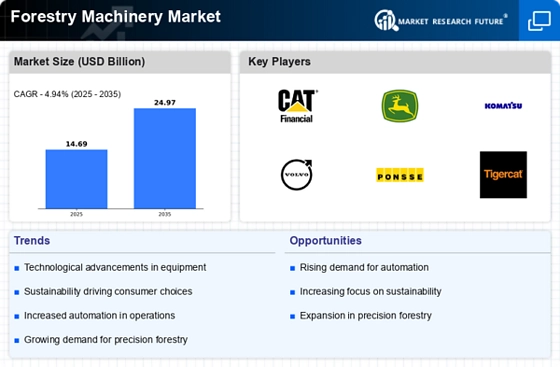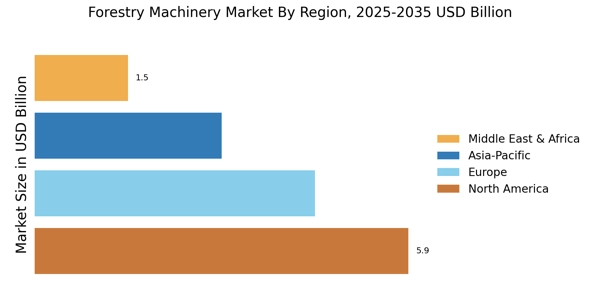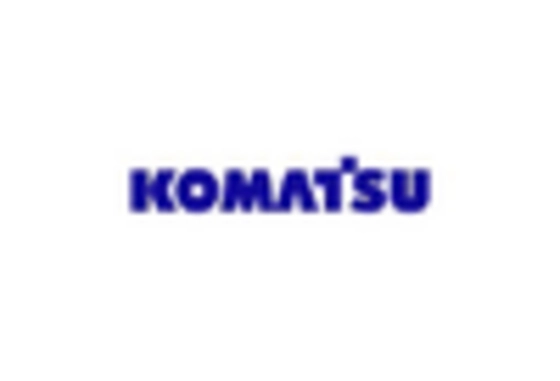The Forestry Machinery Market is currently characterized by a dynamic competitive landscape, driven by technological advancements, sustainability initiatives, and increasing demand for efficient logging solutions. Major players such as Caterpillar (US), John Deere (US), and Komatsu (JP) are strategically positioned to leverage these trends. Caterpillar (US) focuses on innovation in machinery design and digital solutions, enhancing operational efficiency for end-users. Meanwhile, John Deere (US) emphasizes sustainability through the development of eco-friendly machinery, aligning with global environmental standards. Komatsu (JP) is actively pursuing regional expansion, particularly in emerging markets, to capitalize on the growing demand for forestry equipment. Collectively, these strategies contribute to a competitive environment that is increasingly shaped by technological prowess and sustainability commitments.
Key business tactics within the Forestry Machinery Market include localizing manufacturing and optimizing supply chains to enhance responsiveness to market demands. The market structure appears moderately fragmented, with several key players exerting influence over various segments. This fragmentation allows for niche players to thrive, while larger companies leverage their scale to optimize production and distribution. The collective influence of these key players fosters a competitive atmosphere where innovation and operational efficiency are paramount.
In August 2025, Caterpillar (US) announced the launch of its new line of hybrid forestry machines, which integrate advanced fuel-efficient technologies. This strategic move not only positions Caterpillar as a leader in sustainable forestry solutions but also addresses the growing regulatory pressures for reduced emissions in the industry. The introduction of hybrid technology is likely to enhance Caterpillar's market share by appealing to environmentally conscious consumers and businesses.
In September 2025, John Deere (US) unveiled a partnership with a leading software company to develop AI-driven analytics tools for forestry operations. This collaboration aims to provide customers with real-time data insights, optimizing equipment usage and reducing operational costs. The strategic importance of this partnership lies in its potential to enhance John Deere's value proposition, making its machinery more attractive to tech-savvy customers seeking efficiency and productivity.
In July 2025, Komatsu (JP) expanded its manufacturing facility in Brazil, aiming to increase production capacity for its forestry equipment. This expansion is significant as it allows Komatsu to better serve the South American market, which is experiencing a surge in demand for advanced forestry machinery. By localizing production, Komatsu can reduce lead times and improve supply chain reliability, thereby strengthening its competitive position in the region.
As of October 2025, current competitive trends in the Forestry Machinery Market are heavily influenced by digitalization, sustainability, and the integration of artificial intelligence. Strategic alliances are increasingly shaping the landscape, enabling companies to pool resources and expertise to innovate more rapidly. Looking ahead, competitive differentiation is expected to evolve from traditional price-based competition to a focus on innovation, technological advancements, and supply chain reliability. This shift underscores the importance of adapting to market demands and leveraging technology to maintain a competitive edge.


















Leave a Comment